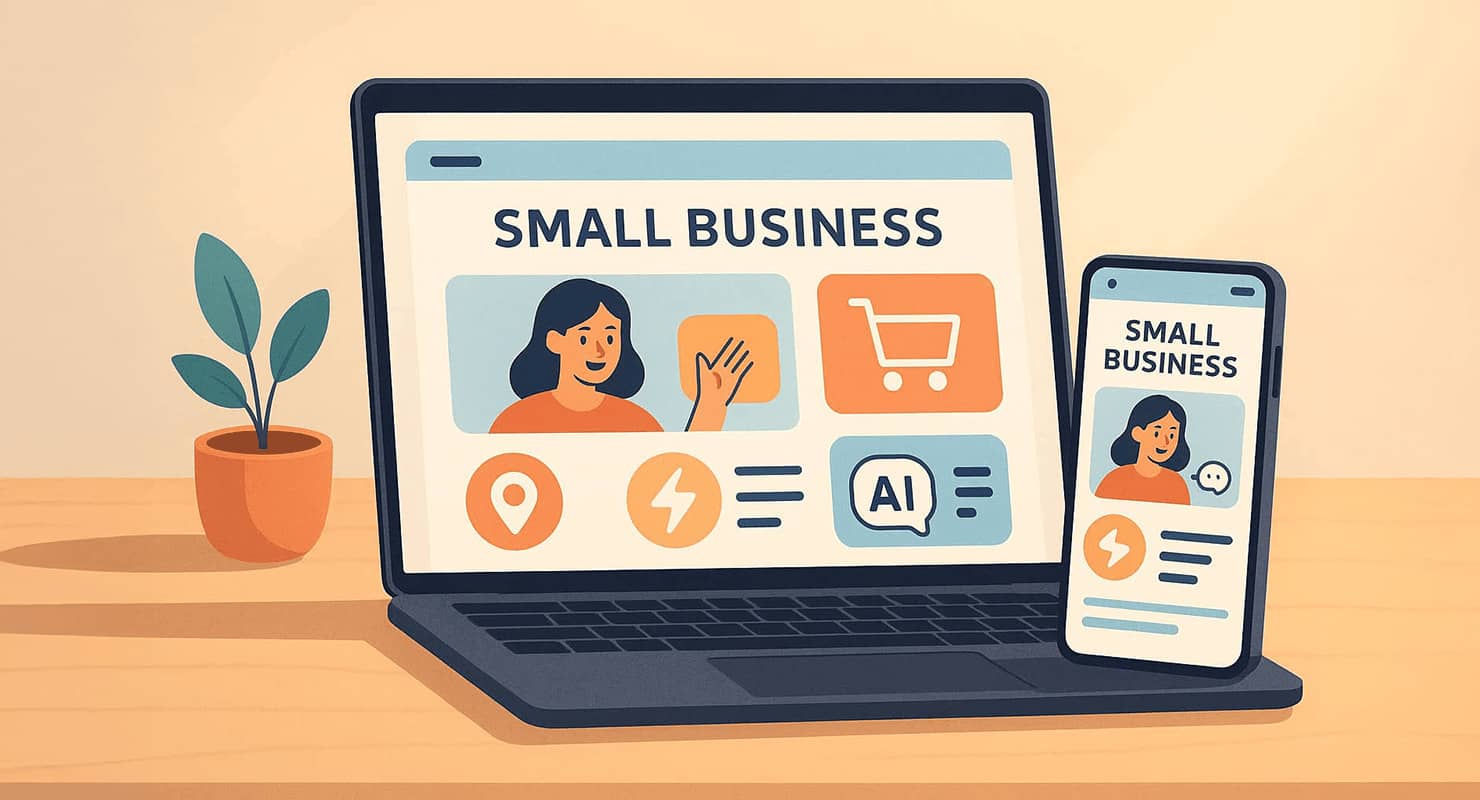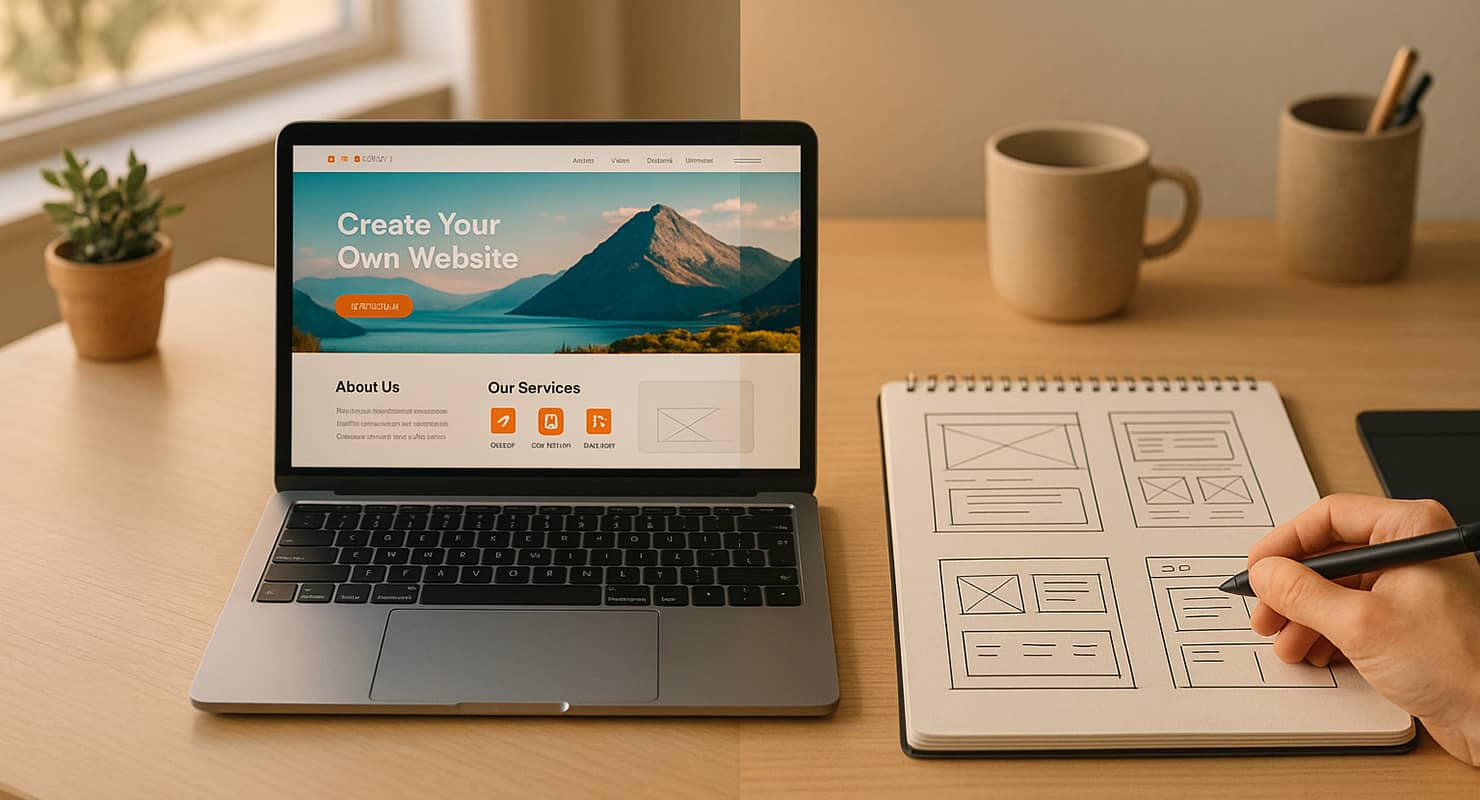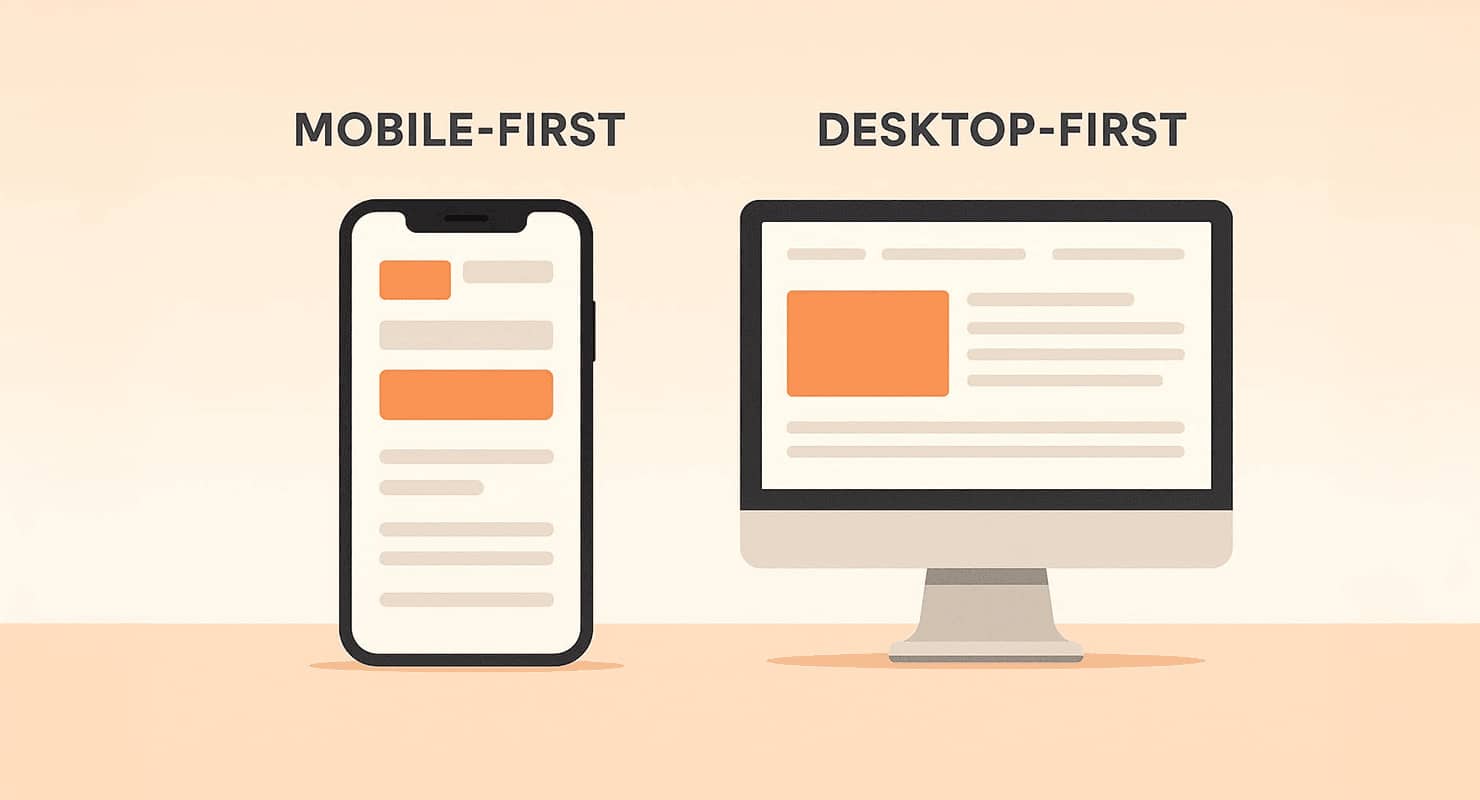
5 Must-Have Features for Small Business Websites in 2025
5 Must-Have Features for Small Business Websites in 2025
Having a great website is a must for small businesses in 2025, especially with more customers relying on mobile devices and local searches. If you're in Western Sydney or anywhere else in Australia, here are the five key features your website needs to succeed:
- Mobile-First Design: Over half of web traffic is from mobile devices. Your site must look and work perfectly on any screen size.
- Local Search & Maps Integration: Make it easy for customers to find you with optimised local search rankings and Google Maps.
- Fast Loading Speeds: A slow site can lose visitors. Aim for pages that load in under 2 seconds.
- Secure Online Shopping: Protect customer data with SSL certificates and offer trusted payment options like PayPal or PayID.
- AI Personalisation: Use AI to tailor content, product suggestions, and offers based on customer behaviour.
These features not only improve user experience but also help your business stand out in a competitive market. Start by auditing your website for these essentials and watch your online presence grow.
Best Website Builder for Small Business 2025: TOP CHOICES
1. Mobile-First Design That Works on All Devices
More than half of all web traffic now comes from mobile devices [1]. This means that small business websites need to focus on delivering a great mobile experience to stay relevant. Gabriel Shaoolian, CEO of Digital Silk, explains:
"Architecting your website with a mobile-first or mobile-centric approach optimizes the most frequented user experience, resulting in higher conversions and increased revenue." [1]
Not having a mobile-friendly site can seriously hurt your business. Research shows that 40% of users will move to a competitor if a site doesn't work well on mobile [2]. On top of that, over half of consumers are likely to leave a website after encountering a poor mobile experience [1].
Here’s how to make sure your website works smoothly on mobile devices:
Key Elements for a Great Mobile Experience
Touch-Friendly Navigation
Create larger, well-spaced touch targets to make navigation easy and intuitive.Content Prioritisation
Focus on displaying the most important content first. Highlight your business details, key products or services, and calls to action.Flexible Visual Elements
Use responsive images and videos that adjust to different screen sizes. Compress files to keep loading times fast and ensure text remains readable.
Designing for Different Screens
| Screen Size | Key Design Tips | User Impact |
|---|---|---|
| Mobile (<768px) | Single-column layout, large touch targets | High priority – must be flawless |
| Tablet (768–1024px) | Two-column layouts, adjusted navigation | Increasingly important |
| Desktop (>1024px) | Full-width layouts, advanced features | Lower priority |
Speed Matters
Mobile users expect fast-loading pages - ideally within three seconds [1]. To improve speed:
- Compress images and reduce redirects or HTTP requests
- Enable browser caching
- Use a content delivery network (CDN)
Regular Testing
Check your site on different devices to ensure it performs well everywhere. Tools like Google’s Mobile-Friendly Test can help you spot and fix any issues before they affect your visitors.
Keep in mind that Google now uses mobile-first indexing [2]. This means your mobile site version plays a major role in determining your search rankings.
2. Local Search Rankings and Maps Integration
For small businesses in Western Sydney, having a strong presence in local search results is crucial in 2025. With "near me" searches becoming the go-to method for finding services, focusing on local SEO is more important than ever. This approach builds on the mobile-first strategies already discussed.
Optimising Your Google Business Profile
Your Google Business Profile (GBP) plays a central role in improving local search visibility. As Bill Vasiliadis, Master of Digital Marketing, explains:
"Local SEO specifically targets your business within your local area, ensuring you appear at the top of search results for people searching for local services." [4]
Here’s how to optimise your GBP:
- Complete Your Profile: Include trading hours, address, contact details, service area, high-quality photos, and your primary business category.
- Use Local Keywords: Add suburb names, local landmarks, and regional phrases to your profile.
Local Search Ranking Factors
Several factors influence your local search rankings. Below is a breakdown of key elements and actions you can take:
| Ranking Factor | Impact | Key Actions |
|---|---|---|
| GBP Optimisation | High | Keep details updated and respond to reviews |
| Local Citations | Medium | List your business in trusted Australian directories |
| Mobile Performance | High | Ensure your site loads quickly on mobile devices |
| Local Content | Medium | Publish content relevant to Western Sydney |
These factors also enhance your Google Maps visibility, making it easier for customers to locate your business.
Maps Integration Strategy
Integrating Google Maps into your local SEO efforts ensures customers can easily find your business. Accurate location details and regular updates to your GBP will make a big difference.
Building Local Authority
To strengthen your local presence, focus on these strategies:
- Create Localised Content: Share stories, news, and events relevant to Western Sydney.
- Manage Reviews: Encourage happy customers to leave reviews and respond to them professionally.
- Consistent Directory Listings: Ensure your business information matches across all Australian directories.
Setting up your GBP for local SEO typically costs around $350 [3].
3. Quick-Loading Pages That Keep Visitors
Fast-loading websites are just as important as mobile-friendly design and local SEO for engaging customers in Western Sydney.
Speed matters. Studies reveal that 47% of users expect a page to load in under 2 seconds, and even a 1-second delay can cause conversion rates to drop by 7% [5].
The Cost of Slow Loading Times
Slow pages can hurt your business. Here's how delays impact user behaviour:
| Load Time | Effect on Visitors |
|---|---|
| 1-second delay | 7% drop in conversions |
| Over 2 seconds | 47% of users leave |
| Over 3 seconds | 40% abandon the site |
How to Improve Page Speed
Optimise Images
Resize and compress images, and switch to formats like WebP to reduce load times.
Technical Fixes
Use Gzip compression, minify your code, enable browser caching, and set up a CDN. These tweaks also enhance mobile performance.
Speed on Mobile Devices
With more people browsing on mobile, ensuring quick load times on these devices is essential. As Matt Cutts, former Head of Web Spam at Google, said:
"Google considers fast load speed as a positive ranking factor." [5]
Keep an eye on mobile speed to maintain performance.
Ongoing Speed Checks
Regular checks help you spot and fix issues before they affect visitors:
- Server Response Time: Ensure your hosting setup delivers quick responses.
- Content Delivery: Use a CDN to serve content from the nearest servers in Western Sydney.
- Performance Testing: Tools like Google PageSpeed Insights can help you track and maintain scores above 90.
Why Speed Matters for Business
Quick-loading pages lead to better user experiences, higher customer retention, and increased conversions - all of which contribute to business growth.
4. Safe Online Shopping Features
A secure online shopping experience not only protects customer data but also builds trust. With cyber threats on the rise, robust security measures are essential to safeguard transactions and comply with Australian regulations.
Key Security Features
| Security Feature | Purpose | Business Benefit |
|---|---|---|
| SSL Certificate | Encrypts customer data | Builds trust |
| PCI DSS Compliance | Secures payment information | Ensures regulatory compliance |
| Fraud Protection | Monitors transactions | Minimises risks |
| Clear Privacy Policy | Explains data handling | Demonstrates transparency |
Using local payment solutions can also add an extra layer of security while simplifying the checkout process.
Australian Payment Gateway Solutions
For businesses in Western Sydney and beyond, local payment gateways provide secure and efficient options. Eway, trusted by over 97,000 Australian businesses, offers strong security features and local support [6].
"Eway provides us with a low-cost option to transact online. You get your funds faster with Eway compared to some other platforms, and this was critical in keeping the cash flow going through COVID-19." - Ben Cleary-Corradini, Co-Founder, Gnocchi Gnocchi Brothers [6]
Boosting Customer Confidence
Reassure shoppers by prominently displaying these trust signals:
- ABN
- Registered business name
- Contact details
- Clear refund and shipping policies
- GST-inclusive pricing
Payment Options
Provide a range of payment methods, including:
- Credit and debit cards
- PayPal
- Digital wallets
- Buy-now-pay-later services
- PayID
This variety ensures convenience and caters to different customer preferences.
Security Best Practices
- Use SSL certificates and secure frameworks to protect data across all devices.
- Perform monthly security audits to identify and address vulnerabilities.
These steps not only secure your site but also foster trust among your customers.
Communicating Security Measures
Showcase security badges and explain your protective measures clearly. This transparency reassures Australian shoppers who prioritise online safety.
5. Smart Content That Adjusts to Visitors
AI-powered personalisation is a game-changer for small business websites. By analysing customer behaviour and preferences, these tools create tailored experiences that can boost engagement and drive conversions.
How AI-Driven Personalisation Works
Smart content adjusts dynamically based on various factors:
| Factor | What It Analyses | Business Benefit |
|---|---|---|
| Browsing History | Pages viewed and user interactions | Better product suggestions |
| Purchase Data | Past transactions and cart items | Targeted offers and recommendations |
| Location | Visitor’s geographic area | Localised content and AUD pricing |
| Device Type | Mobile, tablet, or desktop usage | Optimised layouts for each device |
These insights help businesses implement personalisation strategies that resonate with their audience.
How to Implement AI Personalisation
Here’s how you can use AI personalisation on your website:
Product Suggestions: Use purchase history to recommend items that align with your customers’ preferences.
Dynamic Content: Adjust content automatically based on user preferences. This could include:
- Customised menus and layouts
- Special offers tailored to individual users
- Location-based information and pricing
AI-Powered Customer Support: Chatbots can provide instant, tailored assistance by:
- Answering common questions
- Recommending products
- Helping with purchase decisions
- Scheduling appointments
"AI can analyze vast amounts of data and provide valuable insights to inform decision-making." [7]
Tips for Successful Implementation
Here’s how to get started:
- Start Small: Focus on one area, like product recommendations, before expanding.
- Track Metrics: Measure engagement, conversion rates, and other key performance indicators.
- Be Transparent: Clearly explain how customer data is collected and used.
- Keep Data Updated: Regularly update AI algorithms to reflect current trends and customer behaviour.
Pairing these strategies with a mobile-friendly and secure website design ensures a seamless user experience.
Success in Action
A travel agency in Sydney used AI tools for language translation and personalised content. This led to more international bookings, better customer engagement, and a broader market reach.
Tools to Consider
AI tools can easily integrate with your existing systems to provide:
- Personalised email campaigns
- Smart content suggestions
- Dynamic pricing adjustments
- Behavioural analytics
- Customised landing pages
"While AI can significantly enhance your content creation efforts, it's important to find the right balance between AI automation and human creativity and oversight." - Ivana Katz, Websites 4 Small Business
Measuring Your Results
Evaluate your success by monitoring:
- Conversion rates
- Average session lengths
- Return visitor statistics
- Customer satisfaction levels
- Revenue per visitor
Conclusion
A modern website is essential for small businesses in Western Sydney aiming to thrive online. The features outlined here not only tackle current challenges but also set your business up for future digital changes.
How These Features Boost Your Business
| Feature | Benefit for Your Business |
|---|---|
| Mobile-First Design | Caters to the growing number of mobile users |
| Local Search Integration | Boosts visibility among nearby customers |
| Quick-Loading Pages | Enhances user experience and search rankings |
| Secure E-commerce | Builds trust with safe online shopping options |
| AI Personalisation | Provides tailored content for individual visitors |
Putting These Features into Action
To make the most of these features, focus on creating a website strategy that strengthens your digital presence. Ensure your site consistently reflects your brand’s identity, from its design to its messaging, across all online platforms.
Steps to Get Started
Take action now to improve your website’s performance:
- Audit your website for mobile-friendliness, fast loading times, and easy navigation.
- Add features that align with your customers' preferences and expectations.
- Use analytics tools to track and refine your performance. Monitor key metrics like:
- Page load speeds
- Conversion rates on mobile devices
- Rankings in local search results
- Online sales through e-commerce
- Visitor engagement on your site
Stay Ahead with Regular Updates
Regularly updating your website keeps it aligned with customer needs and supports long-term online success.
FAQs
What steps can small businesses take to ensure their websites load quickly on mobile devices for better user experience and search rankings?
To ensure your small business website loads quickly on mobile devices, focus on a few essential areas. Optimise images by compressing them without losing quality, and use modern formats like WebP. Minify CSS, JavaScript, and HTML files to reduce page size and speed up loading times. Limit redirects and eliminate unnecessary ones, as each redirect adds extra loading time.
Additionally, ensure your hosting server has fast response times and consider implementing a content delivery network (CDN) to serve your site from servers closer to your users. Prioritising speed is crucial, as even a one-second delay in mobile load times can significantly impact user experience and conversion rates.
How can I optimise my Google Business Profile for better local search rankings in 2025?
To improve your Google Business Profile for better local search visibility in 2025, start by ensuring your profile is fully set up and verified. Provide accurate and detailed information about your business, including your address, phone number, operating hours, and website. Use Australian date and time formats, and ensure your contact details are consistent across all platforms.
Add high-quality images that showcase your business, such as your storefront, products, or team. Regularly update these photos to keep your profile fresh and engaging. Encourage satisfied customers to leave positive reviews, and respond to all reviews promptly and professionally to build trust with potential customers.
Finally, take advantage of features like posts and Q&A to share updates, promotions, or important information. This not only keeps your profile active but also helps your business stand out in local search results.
How can small businesses use AI personalisation to boost customer engagement and sales on their website?
AI personalisation can help small businesses create more engaging and effective websites by tailoring the online experience to individual customers. By analysing browsing behaviour, purchase history, and preferences, AI tools can recommend products or services that are most relevant to each visitor.
For example, small businesses can use AI to display personalised product recommendations, offer exclusive discounts based on past interactions, or even customise website content to match customer interests. These features not only make the shopping experience more enjoyable but also increase the chances of higher conversions and repeat business.
Implementing AI personalisation doesn’t have to be complex. Many tools available today are user-friendly and designed to integrate seamlessly into existing platforms, making it easier than ever for small businesses to stay competitive in the digital space.




